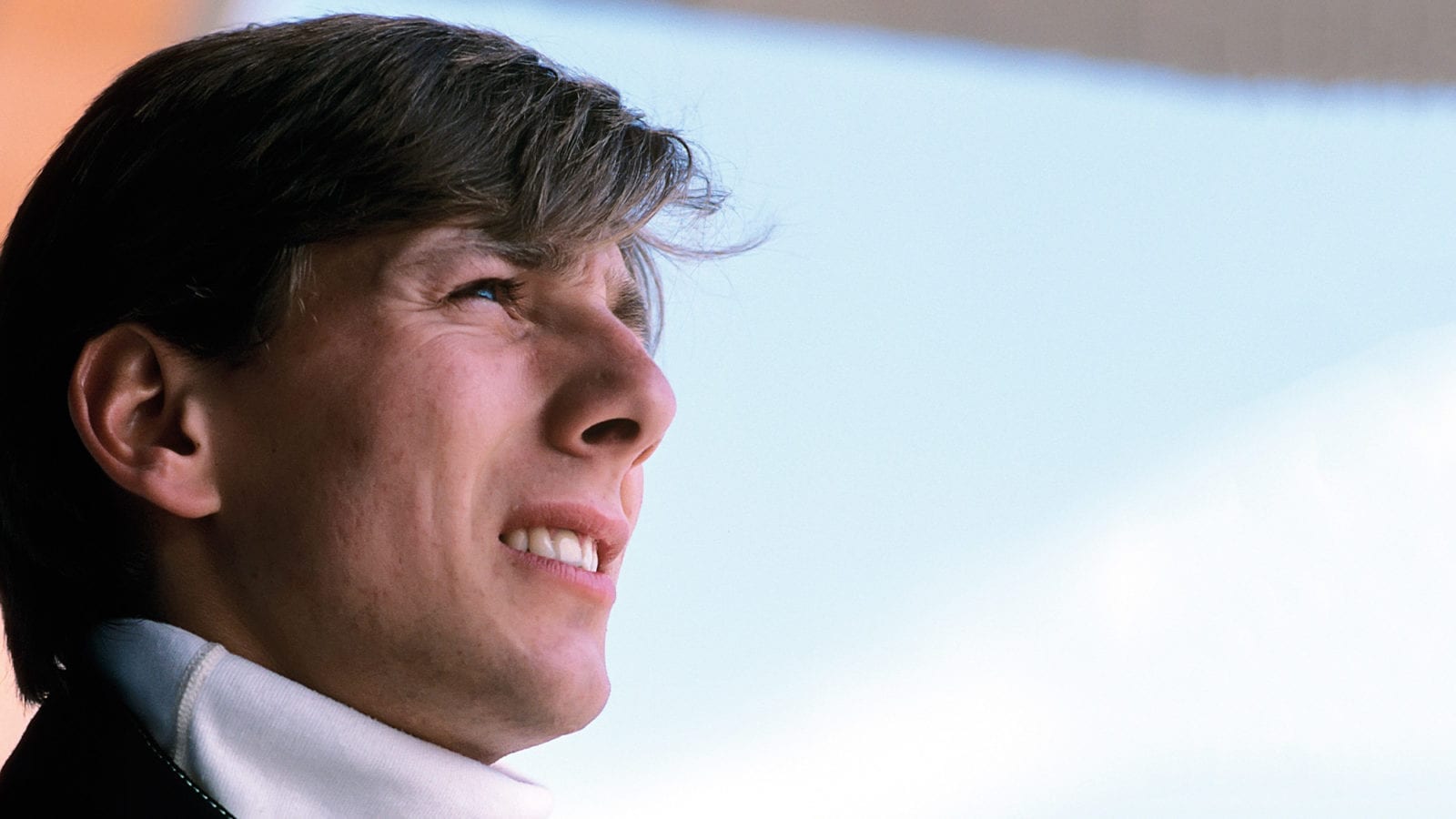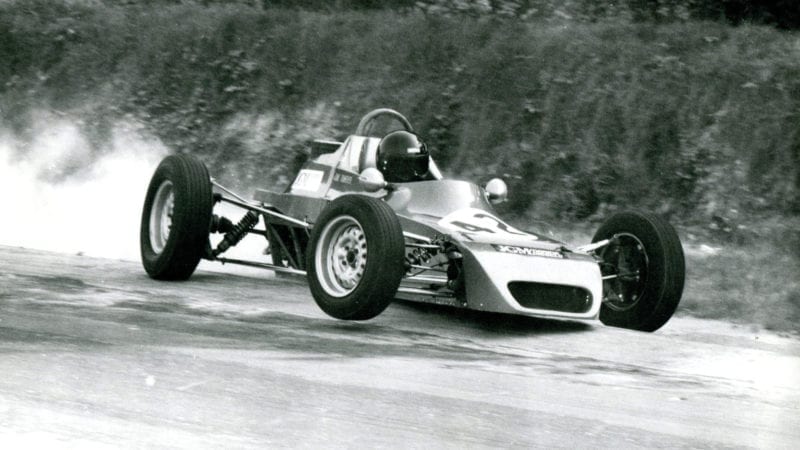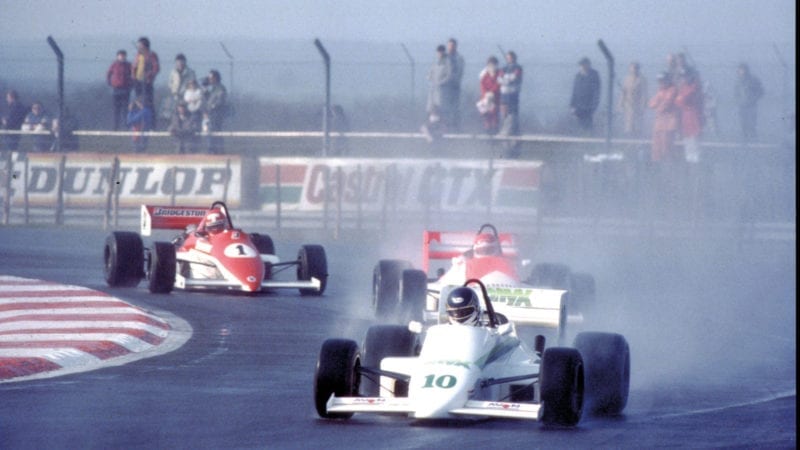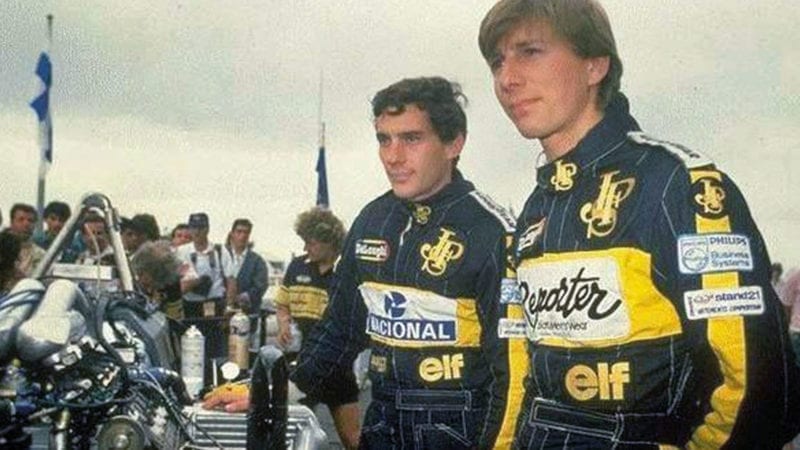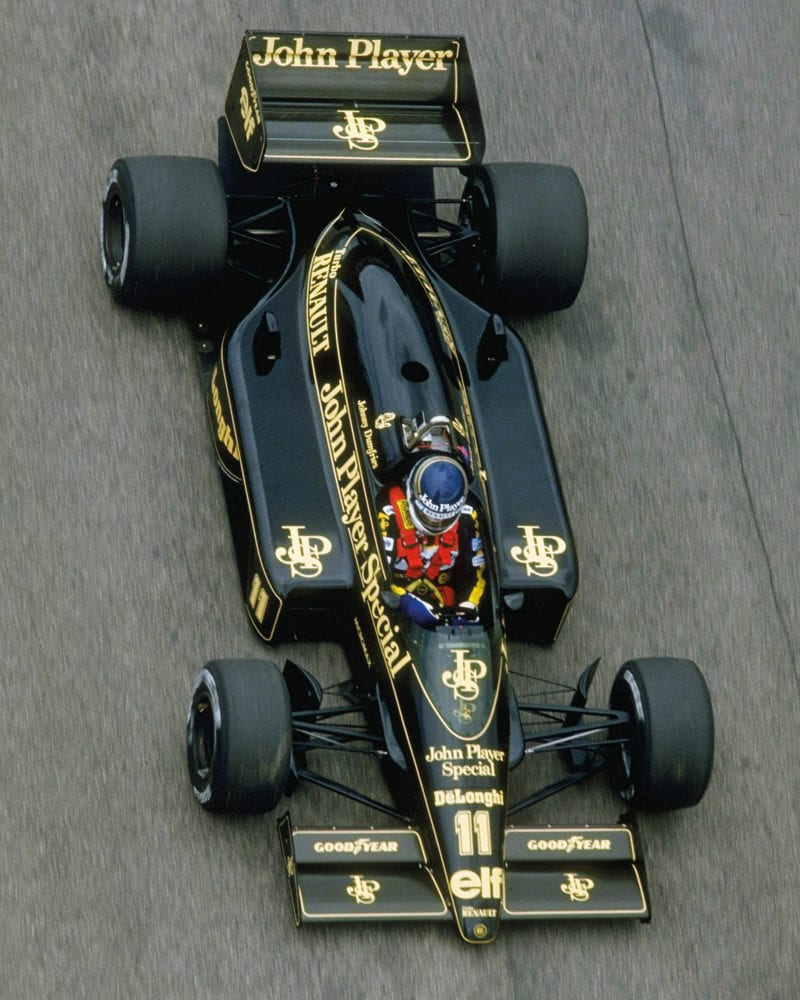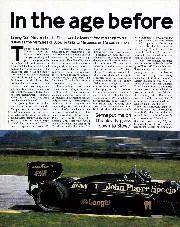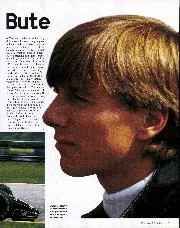I was aggressively ambitious but I would have been better off in another team like Tyrrell. I had my chance to drive for Ken in ’84 when Martin Brundle was injured in Dallas, but I was winning in F3 and felt a moral obligation to Les Thacker of BP and Dave Price who made all that possible.
The F1 arena is so pressurised, almost intimidating, and I didn’t perform to the best of my ability. Honestly, I screwed up. I didn’t have a manager or a sponsor, how the hell did I get myself into that position? At Hockenheim in July, after five mechanical failures, I was told I’d be out at the end of the year. Peter Warr and Senna wanted Honda engines and with the Honda deal came Satoru Nakajima, so I was out of the door. The car broke again in Germany but then I got fifth in Hungary, ninth in Portugal and sixth in Australia, although I hated street circuits – too many slow corners – and it was all just too little too late. I talked to a few teams for ’87 but I was clueless, not smart enough in that extreme environment.
I should have had a manager, knocked on all the doors, but I have no regrets. I’d made it to Formula 1, felt a great sense of achievement, learnt a lot about resilience, about dealing with people.
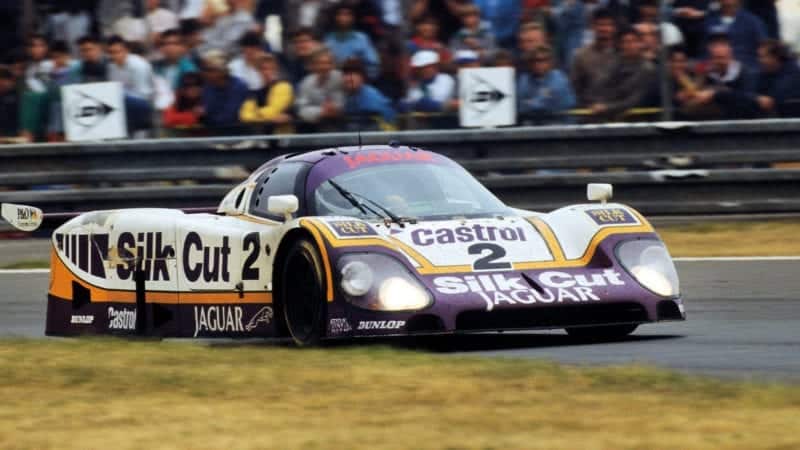
The greatest day of John’s career came at Le Mans in 1988 driving the Jaguar XJR9 – a race he knew he could win
DPPI
MS: You were immediately successful in Group C, signed up by Tom Walkinshaw early on. Was it a letdown after F1 with Senna and Lotus?
JB: Mmm… it really wasn’t something that I wanted to do. I didn’t like driving those cars at all. Coming from single-seaters, you’re shut in under a roof and it felt very claustrophobic. But I was still ambitious and being well paid to do a job, so I thought I’d better just get on with it. You get used to it, and it was a world championship with great teams, good cars and drivers. I never liked sharing with other drivers but I was lucky with Jan Lammers at TWR; we had a great relationship and we’re still friends. The ’87 season was a bit scrappy but Mauro Baldi and I shared Richard Lloyd’s Porsche 962, a great car, in the Brands Hatch 1000Kms and we were quick, coming second and splitting Walkinshaw’s Jaguars. I’d been phoning Tom, he hadn’t returned any of my calls, but he came up to me after that race, congratulated me and said if I wanted a drive in ’88 I should call him. So of course I did, the next day. He was a tough guy, a Scot of course, and ran a fantastic team, so it was a great opportunity for me and many other F1 drivers. That XJR9 was a very good car and ahead of Le Mans in ’88, Jan Lammers, Andy Wallace and I knew we could win it.
Jan set the car up, very low drag of course, a bit twitchy in the Porsche curves, but so fast, and on the Mulsanne back then it was flat all the way. You were acutely aware of the speed. Having taken the lead, all we had to do was look after the car. I’d put all my aggression in a box and locked it up
for that race – so did Jan and Andy – and we brought it home. I didn’t sleep at all, I was too wired. Jan did the last two stints; something had broken in the gearbox, and Tom wanted Jan in the car. He stopped using most of the gears to get us across the line. That was great teamwork – and you need a bit of luck to win Le Mans.
MS: The TWR drive came to a rather abrupt end. What went wrong?
JB: Tom fired me [much laughter]. The love affair was over when I chucked the car off on the first lap of the Nürburgring 1000Kms. It was a classic idiotic mistake [more laughter] but there you go. The race was run in two heats. It was wet for the second one. I took the start, slid off on lap one, and it took half an hour to repair the car. Tom went very quiet. He didn’t need to say much – he didn’t like crashers. He wasn’t a spanner-thrower; you only had to look at him and you knew, so I steered well clear of him.
Then I went to TOM’S Toyota, did two seasons with them. We had some success; the ’89 car was fantastic, so much power in that single-turbo four-cylinder engine, but on the new car, a twin-turbo V8, the fuel consumption was terrible, it understeered and we struggled to cure its pitch and roll. Finally we changed the front uprights. It was a frustrating two years, two DNFs at Le Mans, and I didn’t have a job for 1991, no prospects, that was not a good moment. What was I going to do? Then my dad became ill. He needed my support in his businesses. I still loved racing but I just had to turn my back on it all, and get on with a new life.
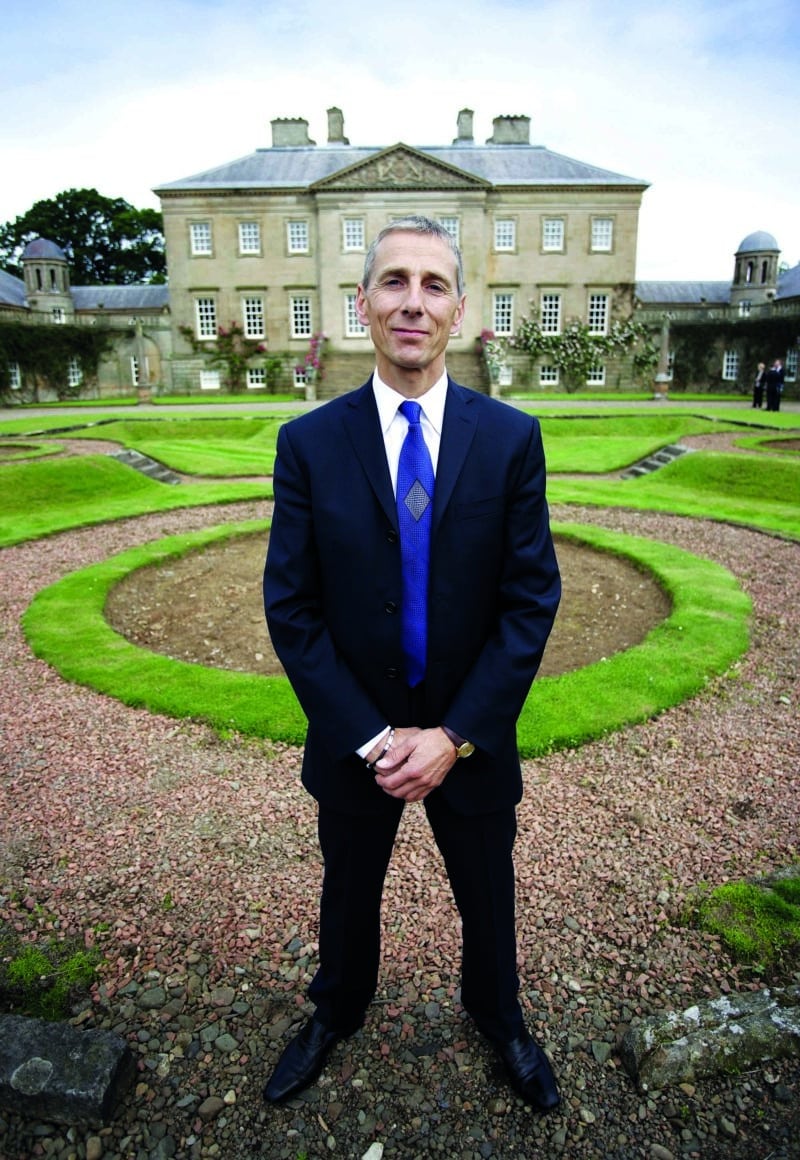
Photographed in 2007 with Dumfries House in the background, which the family sold to a trust headed by Prince Charles. These days, John mainly spends his time in London
James Fraser/Shutterstock
MS: How tough was that, having to walk away from an intense and competitive sport?
JB: You know, everyone always talks about missing the adrenaline, but it’s not that. It’s about the desire to compete and win, the satisfaction, really close relationships, working with a team, living in that pressurised environment. That’s irreplaceable and leaves a big hole.
I still meet up with a lot of my old mates from Formula Ford and Formula 3. We have so many shared experiences; we had a lot of fun and we are still friends. Some, like Andy Middlehurst, are doing historics. I’m not sure about doing that.
MS: In 2002 you created the Mount Stuart Classic on the Isle of Bute. What inspired you to do that?
JB: I saw what Charles March was doing at Goodwood, staging those fantastic events, and I had driven the TWR Jaguar at the Festival. It was a bit embarrassing actually because I went into the bales at Molecomb Corner. Why break the habit of a lifetime? [More laughter]. I was mortified but Jan [Lammers] was there too, celebrating our Le Mans victory, and he said, “Don’t worry Johnny, that’s what all the people come here for.”
MS: You had F1 cars at Mount Stuart. People who went may remember Takuma Sato’s runs in the BAR-Honda.
JB: Yes, I had all the connections to do it, the crowd loved it, and we had very good press coverage. It was successful but challenging, because of it being on an island on the west coast of Scotland, not in the South within easy distance of London. The logistics were a nightmare, using ferries, and not enough accommodation on the island, so we only ran it for two years. It was good, though, and great fun while it lasted.
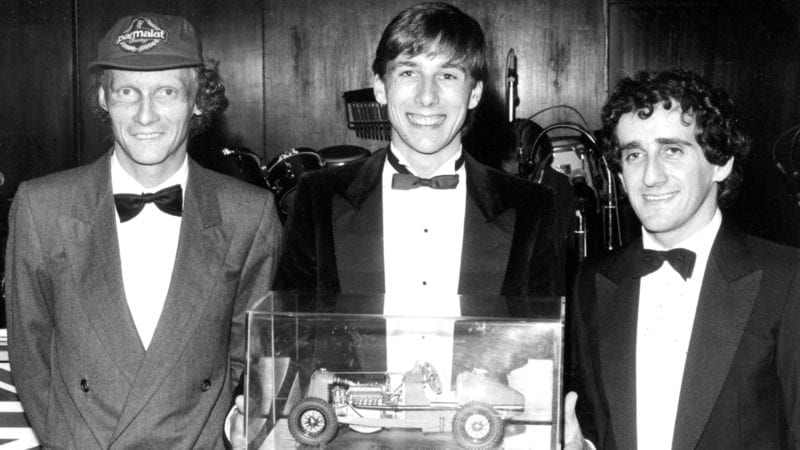
Grovewood Award winner, 1983, which was presented to the year’s up and coming drivers
MS: You love restoring old American cars. Is that how you relax these days when away from running your commercial property business in London?
JB: Yeah, I never let go of my old toolbox from the Formula Ford days and this all goes back to the 1980s with Dave Price, who loved American cars. I bought a 1949 Series 62 fastback coupé Cadillac, an amazing car.
I used it every day round London, stored it for two years, then it needed restoration and I met Mike Sargeant at Tornado Automotive, an excellent fabricator and mechanic, who did a beautiful job on that car. I was impressed so I bought some more cars, and a unit in High Wycombe, and we moved Tornado in there. That’s where I go to work on my cars, which include a 1968 Plymouth Road Runner, a real piece of work, goes like hell, a 1954 Chevrolet pick-up truck and a 1960 Pontiac Bonneville. I drive the pick-up truck when I’m getting around London.
MS: So, what’s your best memory of Johnny Dumfries the racing driver?
JB: Winning the Formula 3 championship; enormously satisfying. It all came together so well. But you know what? I wish I’d had what we had in 1984 in 1983, then I could have gone up against Senna and Brundle. I’d shown what I could do, and that would have been fantastic. But it was all a hell of a lot of fun and I loved every minute of those days.
